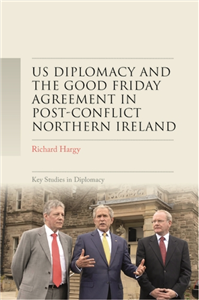Your Search Results
-
CommonWealth Education Media & Publishing Co., Ltd.
CommonWealth Education Media & Publishing Co., Ltd., Taiwan's most influential education & parenting media. Also a member of CommonWealth Magazine Group, Taiwan’s leading media for over 30 years. Our children’s book publishing was launched in 2005. Furthermore, the CommonWealth Parenting magazine was launched in 2008, as the credible information resource for parents of children aged up to 15, and also the only educational magazine in Taiwan that combines current issues on education, parenting and family lifestyle. We offer reading experience of the highest quality through various categories for children and teenagers, successfully built up a strong following of parents, educators, scholars and education policy makers. Our books & magazine provide great contents for every age group and different roles. We also provide digital content & service, online school platform, curating, exhibition and summer camp, social media platform and e-shopping website, educational innovation conference, and IP rights management. Our value proposition are to provide a professional and reliable parenting and education total solution and also carefully integrate and select products / services / value for parents and educators.
View Rights Portal
-
Promoted Content
-
Promoted Content
Ich traf meinen Mörder
Ein Journalist und die dunklen Seiten der Macht
by Dündar, Can / Übersetzt von Adatepe, Sabine
Ein Brief erreicht den Exil-Journalisten Can Dündar. Der Absender: Serkan Kurtuluş, ein türkischer Häftling in einem Gefängnis in Buenos Aires. Er gibt sich als jemand zu erkennen, der den Auftrag erhielt, ihn zu ermorden – und verspricht ihm brisante Informationen. Der Hintergrund: Mit einem Artikel über geheime Waffenlieferungen der Türkei an eine verbotene syrische Islamistenorganisation machte sich Can Dündar Staatspräsident Erdoğan zum Feind. Er wurde zu 27 Jahren Haft verurteilt – und es wurde ein Attentat auf ihn verübt, direkt vor dem Gerichtsgebäude. Dündar besucht den Mann, der ihn ermorden sollte, im Gefängnis. Dieser wiederum fürchtet wegen drohender Abschiebung in die Türkei jetzt selbst um sein Leben. Durch ihn und bei weiteren Recherchen stößt er auf ein Netzwerk von geheimen Deals zwischen demokratischen und autokratischen Regierungen und deren Verbindungen zum organisierten Verbrechen und zu Terrororganisationen. Eine unglaubliche Geschichte, spannend wie ein Thriller, aber leider real – ein erschreckender Blick in die Abgründe politischen Machtmissbrauchs.
-
 Trusted Partner
1982
Trusted Partner
1982Von der Verantwortung des Wissens
Positionen der neueren Philosophie der Wissenschaft
by Paul Good
-
 Trusted Partner
Trusted Partner
-
 Trusted Partner
Trusted Partner
-
 Trusted Partner
Trusted Partner
-
 Trusted Partner
Trusted Partner
-
 Trusted Partner
Trusted Partner
Die rissige Brücke über den Bosporus
Ein Jahr Türkische Republik und der Westen
by Dündar, Can / Übersetzung: Adatepe, Sabine
-
 Trusted Partner
September 2011
Trusted Partner
September 2011In der Stille hörst du dich selbst
Meine 12 Jahre in einem Schweigekloster
by Pot, Miek / Übersetzt von Heitzer-Gores, Waltraud
-
 Trusted Partner
August 2004
Trusted Partner
August 2004Hollow Plastic Parts
Design and Manufacture (Print-on-Demand)
by Beall, Glenn; Throne, James L.
-
 Trusted Partner
PsychologyApril 2018
Trusted Partner
PsychologyApril 2018What is “Good” Dementia Care?
by Christoph Held
People with dementia experience their condition as a big change in which, for example, new events are not linked to existing experiences and wishes, thoughts, and actions can no longer be connected to each other. This kind of experience of the self, due to the intergative function of the brainbeing temporarily or permanently lost, is called dissociative self-experience. Based on this understanding of dementia, the author develops an approach to effectively understand and support people with dementia in everyday activities. Typical everyday situations and behaviours are presented and reflected on in a practical context.
-
 Trusted Partner
Humanities & Social SciencesJune 2020
Trusted Partner
Humanities & Social SciencesJune 2020Karl Polanyi and twenty-first-century capitalism
by Radhika Desai, Kari Polanyi Levitt, Radhika Desai, Alan Freeman
-
 Trusted Partner
Humanities & Social SciencesJanuary 2026
Trusted Partner
Humanities & Social SciencesJanuary 2026Karl Polanyi and twenty-first-century capitalism
by Radhika Desai, Kari Polanyi Levitt
-
 Trusted Partner
May 2016
Trusted Partner
May 2016Meine Dschungelmutter
Wie ich bei den Yanomami-Indianern meine Wurzeln fand
by Good, David / Übersetzt von Förs, Katharina; Übersetzt von Schuhmacher, Sonja; Zusammen mit Paisner, Daniel
-
 Trusted Partner
Humanities & Social SciencesAugust 2023
Trusted Partner
Humanities & Social SciencesAugust 2023The bad German and the good Italian
by Paul Barnaby, Filippo Focardi
-
 Trusted Partner
Trusted Partner
-
 Trusted Partner
Teaching, Language & ReferenceMay 2025
Trusted Partner
Teaching, Language & ReferenceMay 2025US diplomacy and the Good Friday Agreement in post-conflict Northern Ireland
by Richard Hargy
Richard Haass and Mitchell Reiss, as autonomous diplomats in the George W. Bush State Department, were able to alter US intervention in Northern Ireland and play critical roles in the post-1998 peace process. Their contributions have not been fully appreciated or understood. The restoration of Northern Ireland's power-sharing government in 2007 was made possible by State Department-led intervention in the peace process. There are few references to Northern Ireland in work examining the foreign policy legacy of the George W. Bush presidency. Moreover, the ability to control US foreign policy towards the region brought one of George W. Bush's Northern Ireland special envoys into direct diplomatic conflict with the most senior actors inside the British government. This book will uncover the extent of this fall-out and provide original accounts on how diplomatic relations between these old allies became so fraught.
-
 Trusted Partner
2019
Trusted Partner
2019Good Evening, Good Night
The cultural history of sleep
by Karoline Walter
What we associate with sleep is shaped by the culture we live in. Whereas the God of the Bible never sleeps, the sinful human falls asleep every night and is thus marked as an inferior being. In the Age of Enlightenment, (too much) sleep was considered a waste of strength, which could otherwise be used to change the world. These days, sleep seems to be subject to the same tenets of usefulness as everything else and is seen to assist with the optimization of one’s self. However, culture and technology also influence how we sleep: for example, the constant availability of light, the modern conditions of work and all sorts of distractions have meant that we no longer follow our natural rhythm – a first sleep before midnight and a second sleep after a longer period of wakefulness, during which we may be active. In “Good Evening, Good Night”, Karoline Walter uses numerous examples from history, literature and research to illustrate how sleep and sleeping have changed across cultures and eras – an entertaining read, certainly nothing to put you to sleep.
-
 Trusted Partner
Geography & the EnvironmentSeptember 2020
Trusted Partner
Geography & the EnvironmentSeptember 2020We Can Do Better
by Arvay, Clemens G.
How Environmental Destruction Caused the Corona Pandemic and Why Ecological Medicine Can Save Us The corona crisis can repeat itself at any time. A book about the disease-causing mechanisms of environmental pollution, and an innovative guide out of the health crisis Clemens Arvay is an expert in the field of medical ecology. In WE CAN DO BETTER, he takes the current corona crisis as an opportunity to look far beyond and work out exactly why negative environmental factors are responsible for an increasing deterioration of public health. Yet the author also points the way out of the calamity, explaining how we ourselves and future generations can improve our health through a different approach to nature.It was only because of environmental factors that COVID-19 was able to become a pandemic. Thus, for Clemens Arvay the corona crisis represents a symptom of a much larger problem, namely, a natural habitat that is making humans sick. It is already known today that fine particulate matter intensifies not only corona but also influenza infections, thereby killing hundreds of thousands of people worldwide every year. Light pollution leads to a rapid increase in cancer, and even the abrasion of automobile tires inhibits our immune system. Clemens Arvay makes himself clear: this is our last chance to take control of the situation. After the corona crisis, we must never allow things to return to the way they were before. Arvay therefore calls for nothing less than an eco-medical revolution in healthcare; a different, less global and industrialized lifestyle. And he shows each and every one of us how we can utilize factors in our environment to protect our health, strengthen our immune system, and stay well. For readers of shinrin-yoku by Annette Lavrijsen
-
 Trusted Partner
Humanities & Social SciencesFebruary 2017
Trusted Partner
Humanities & Social SciencesFebruary 2017Country houses and the British Empire, 1700–1930
by Stephanie Barczewski
Country houses and the British empire, 1700-1930 assesses the economic and cultural links between country houses and the Empire between the eighteenth and twentieth centuries. Using sources from over fifty British and Irish archives, it enables readers to better understand the impact of the empire upon the British metropolis by showing both the geographical variations and its different cultural manifestations. Barczewski offers a rare scholarly analysis of the history of country houses that goes beyond an architectural or biographical study, and recognises their importance as the physical embodiments of imperial wealth and reflectors of imperial cultural influences. In so doing, she restores them to their true place of centrality in British culture over the last three centuries, and provides fresh insights into the role of the Empire in the British metropolis.































